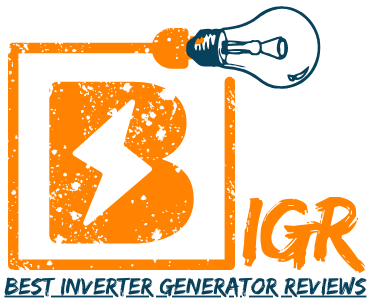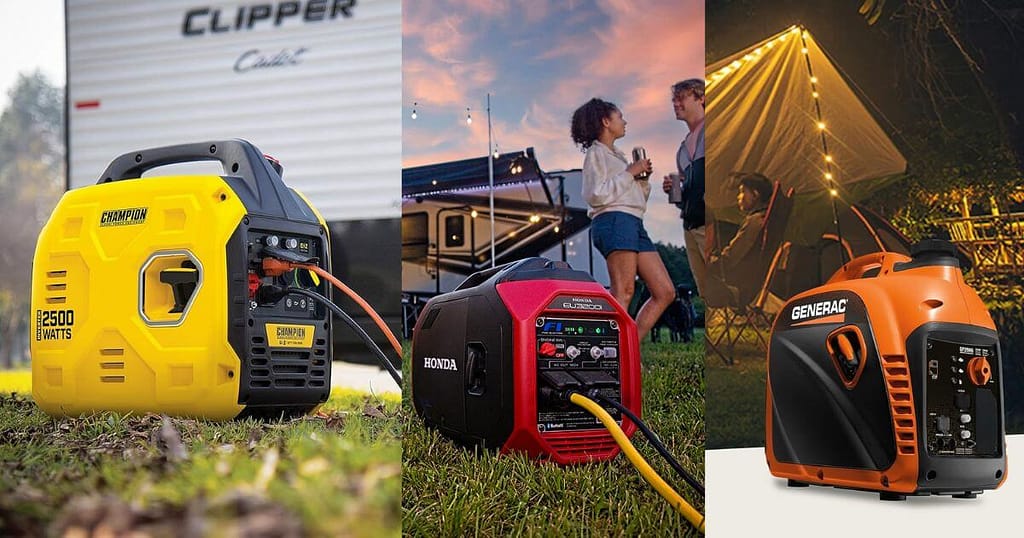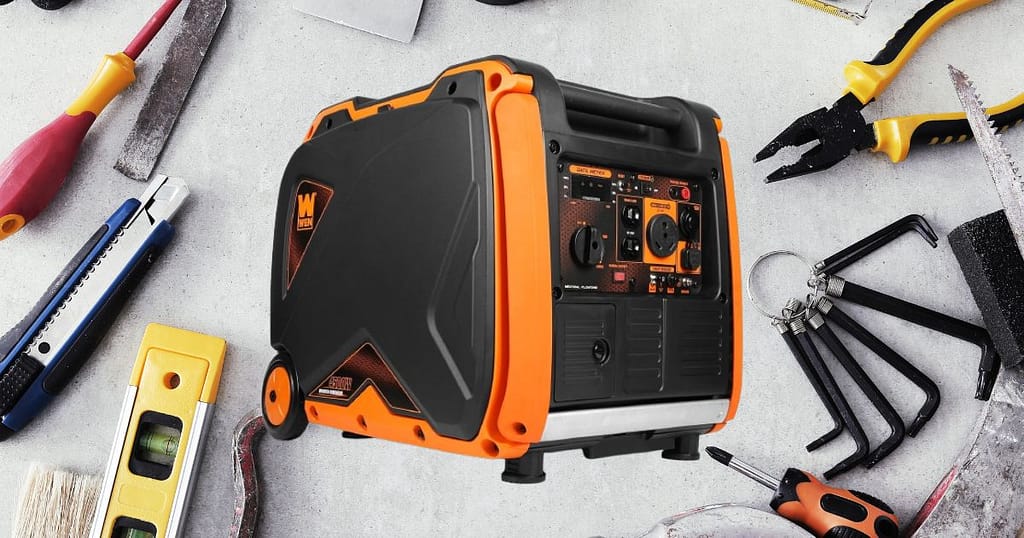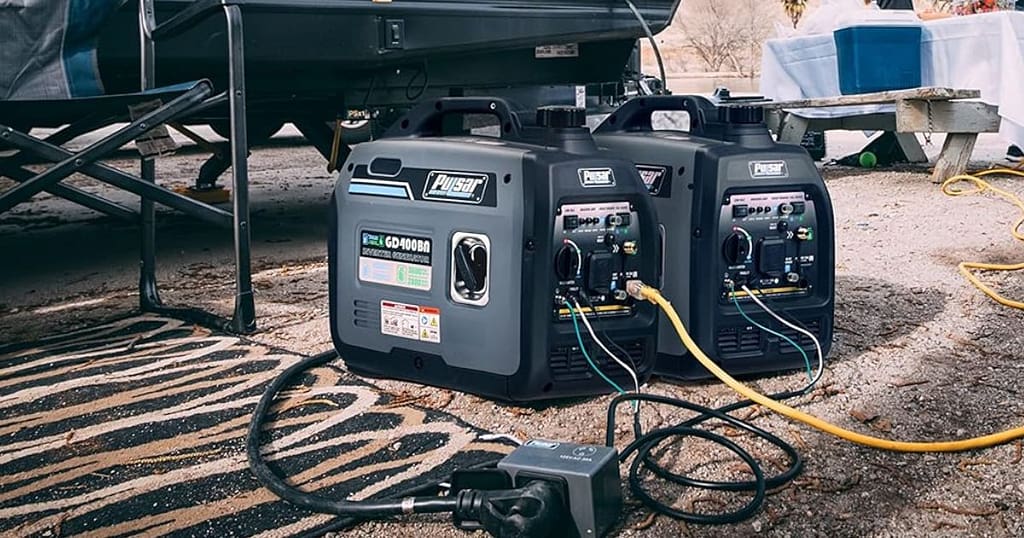An inverter generator is a powerful tool that provides power in the form of alternating current (AC) for different appliances and machines. It converts direct current (DC) into AC by using a complex electronic circuit. Inverter generators are used for various purposes like camping, outdoor events, and home backup power. However, like any other machine, inverter generators can have their own set of problems. In this blog, we will discuss how to troubleshoot common issues with your inverter generator.
How to Troubleshoot Common Issues with Inverter Generator
The engine won’t start
Inverter generators are popular power generators that provide stable, clean power for a range of applications. However, like any other machine, they may encounter problems that could prevent them from functioning correctly. One common issue that many generator owners may encounter is when their generator’s engine fails to start.
If you find yourself in this situation, there are several things you can do to troubleshoot the problem. As mentioned in the prompt, the first step is to check the oil level. Inverter generators often come equipped with an oil level sensor that prevents the engine from starting if the oil level is low. Without proper lubrication, the engine’s moving parts can quickly wear out, leading to more severe problems down the line. So, make sure to add enough oil to bring it to the required level if necessary.
If the oil level is okay, the next step is to check the spark plug. The spark plug ignites the fuel-air mixture in the engine cylinder, providing the initial energy for the engine to start. If the spark plug is dirty, corroded, or worn out, it may not generate a spark, leading to a non-starting engine. Therefore, remove the spark plug and check its condition. If it has dirtiest or damaged, so you need to replace it with a new one.
Another common cause of an engine that won’t start is a lack of fuel. Inverter generators come with a fuel tank that stores the fuel, and if the tank is empty or nearly empty, the engine won’t start. So, make sure to check the fuel level and refill the tank if necessary.
However, even after taking these steps, your generator may still not start. In such cases, you might have to dig deeper into the problem, and it could be time to call a professional. For example, issues with the carburetor, starter, or fuel delivery system can also prevent your generator from starting.
The engine runs rough:
Another common issue is when the engine runs rough, which means that it’s not running smoothly or is producing vibrations and noise that it normally doesn’t. This can be caused by a number of factors, but the most common reasons are a dirty air filter or old fuel.
Firstly, a dirty air filter can cause the engine to run rough. Air filters are an essential component of an inverter generator as they prevent dirt and debris from entering the engine and causing damage. However, if the air filter becomes clogged with dirt and dust, it can restrict the flow of air into the engine, resulting in a lean fuel mixture. This can cause the engine to run rough, produce less power, and even stall.
To check the air filter, locate it on the side of the generator and remove it from the housing. If it appears dirty or clogged, it will need to be cleaned or replaced. Cleaning the air filter involves tapping it gently to remove loose dirt and debris and then washing it with a mild soap and water solution. Allow it to dry completely before reinserting it into the generator. If the air filter is damaged or excessively dirty, it may need to be replaced.
Another reason for rough engine operation is old fuel. Gasoline has a shelf life of about a month, after which it begins to break down and lose its effectiveness. This can cause it to become stale, oxidize, and produce harmful deposits that can clog the carburetor and fuel system. As a result, the engine may not receive enough fuel, causing it to run rough, misfire, or stall.
To remedy this, drain the old fuel from the tank and replace it with fresh fuel. It’s recommended to use a fuel stabilizer when storing gasoline for extended periods, as it can help prevent it from breaking down and becoming ineffective. Additionally, it’s important to use high-quality gasoline that contains the recommended octane rating for the generator.
The generator is not producing power:
When it comes to inverter generators, a common issue that users may encounter is the generator not producing power. This can be a frustrating problem, as it can prevent the generator from being able to power your devices or equipment. However, there are several potential causes for this issue, as well as some steps you can take to address it.
One of the first things to check if your generator is not producing power is the circuit breaker. In many cases, the circuit breaker may have tripped due to an overload or other issue. To reset the circuit breaker, you can typically locate it on the generator panel and switch it back to the “On” position. Once you’ve done this, try running your generator again and see if it is now producing power.
If the circuit breaker keeps tripping, however, this may indicate a more serious problem. One possible cause could be an issue with the wiring. This may be due to damage or wear and tear over time, or it may be the result of a problem with the generator’s electrical system. In either case, it may be necessary to consult with a professional to diagnose and fix the problem.
Another potential cause for a generator not producing power is a faulty component. For example, the inverter may be damaged or malfunctioning. The inverter is responsible for converting the DC power produced by the generator into AC power that can be used to run your devices or equipment. If the inverter is not working correctly, it may prevent the generator from producing power. In this case, you may need to have the inverter repaired or replaced.
It’s worth noting that there are also some steps you can take to prevent problems with your generator and reduce the likelihood of it not producing power. For example, you should always follow the manufacturer’s instructions when it comes to maintenance and care of your generator. This may include cleaning the air filter, regular oil changes, and checking the spark plug.
Additionally, it is a good idea to avoid use overloading on your generator, as this can cause damage to its electrical components and lead to problems with power production.
The generator is producing low power:
An inverter generator is an efficient and reliable source of portable power that converts DC power to AC power. These generators are designed to produce clean and stable power that is safe for sensitive electronic devices. However, sometimes you may encounter a situation where your inverter generator is producing low power. In this case, there are several reasons why this could be happening, and there are also steps you can take to fix the problem.
One of the most common reasons why an inverter generator produces low power is due to a high load. Inverter generators are designed to produce power based on the load, and if the load is too high, the generator will produce low power. This means that if you are trying to power too many devices or appliances at once, the generator may not be able to keep up with the demand.
To fix this problem, you can reduce the load by turning off some of the devices or appliances and checking if the power output improves. It’s important to note that each inverter generator has a maximum power output that should not be exceeded.
Another reason why your inverter generator may be producing low power is due to a dirty air filter. The air filter is responsible for keeping dirt and debris out of the engine, and if it becomes clogged with debris, it can reduce the airflow to the engine, leading to low power output. To fix this problem, you should check the air filter and clean or replace it if necessary. A dirty air filter can also cause the engine to run too rich, which can lead to low power output.
In addition to a dirty air filter and a high load, there are several other reasons why your inverter generator may be producing low power. These include:
Fuel issues:
If your inverter generator is running on stale or contaminated fuel, it can lead to low power output. To fix this problem, you should drain the fuel tank and refill it with fresh fuel.
Carburetor issues:
The carburetor is responsible for mixing the air and fuel to create the combustion that powers the generator. If the carburetor is clogged or not functioning properly, it can lead to low power output. To fix this problem, you should clean or replace the carburetor.
Spark plug issues:
If the spark plug is fouled or worn, it can prevent the engine from starting or cause low power output. To fix this problem, you should replace the spark plug.
Generator overload protection:
Inverter generators have overload protection to prevent damage to the engine and generator. If the generator senses an overload, it will reduce the power output to protect itself. To fix this problem, you should reduce the load on the generator.
The generator is producing high-voltage
An inverter generator is a type of generator that uses advanced technology to produce high-quality power. However, sometimes these generators may produce high voltage, which could damage your appliances and equipment.
The voltage regulator is a critical component of an inverter generator that regulates the voltage output. It ensures that the voltage stays within safe limits and does not exceed the capacity of the devices it powers. A faulty voltage regulator may fail to regulate the voltage properly, leading to an overvoltage situation.
Overvoltage can damage electrical devices and appliances by causing them to overheat or burn out. Therefore, it is crucial to address the issue of high voltage in your generator promptly.
If you suspect that your generator is producing high voltage, you can use a digital multimeter to check the output voltage. A reading above the recommended voltage range indicates that the voltage regulator may be faulty.
Replacing a faulty voltage regulator may be a DIY project if you have experience working with electrical components. However, if you’re not familiar with electrical work, it’s best to seek the help of a professional. A qualified technician can diagnose and repair the issue correctly and ensure that your generator is operating safely and efficiently.
The generator is producing low-voltage
An inverter generator is a type of generator that uses a rectifier and an inverter to convert the AC power generated by the engine into DC power, which is then inverted back into clean and stable AC power. This process allows for a more stable and cleaner output of power compared to traditional generators.
However, if your inverter generator is producing low voltage, it could be an indication of a problem with either the voltage regulator or the inverter itself. The voltage regulator is responsible for regulating the voltage output of the generator to ensure that it stays within a safe and stable range. If the voltage regulator is faulty, it can cause the generator to produce low voltage output.
Additionally, the inverter itself could be damaged or malfunctioning, which can also result in low voltage output. In this case, the inverter may need to be replaced to restore proper voltage output.
To determine the cause of the low voltage output, it’s best to have a qualified technician or electrician diagnose and repair the problem. They can test the voltage regulator and the inverter to identify the issue and replace any faulty components as needed. It’s important to address this issue promptly to prevent any potential damage to electrical equipment or appliances that may be connected to the generator.
The Generator is Producing too much Noise
Inverter generators are known for their quiet operation, but sometimes they may produce excessive noise due to a clogged muffler. A muffler is a component in the generator’s exhaust system that reduces the noise level by dissipating the exhaust gases and reducing their pressure.
Over time, the muffler can get clogged with dirt, dust, and debris, which restricts the exhaust flow and increases the noise level. To fix this issue, you can clean the muffler by removing it from the generator and cleaning it with a brush or compressed air. If the muffler is severely damaged or corroded, it may need to be replaced.
In addition to the muffler, other factors such as the generator’s load, operating conditions, and maintenance status can also affect the noise level. Therefore, it’s important to follow the manufacturer’s instructions and perform regular maintenance to keep your generator operating quietly and efficiently.
Our Verdict
In conclusion, inverter generators are powerful tools that can provide power in various situations. However, they can have their own set of problems. By following the troubleshooting tips mentioned above, you can identify and fix common issues with your inverter generator. If you are not comfortable troubleshooting your generator on your own, it’s always better to consult a professional.





